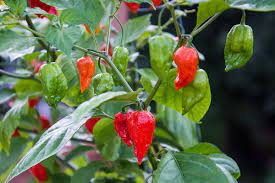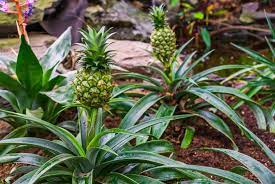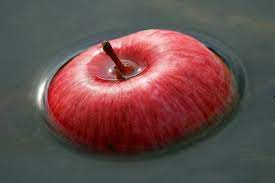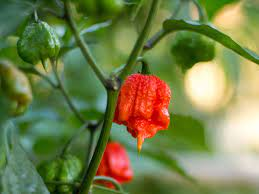Honey Never Spoils:
Archaeologists have found pots of honey in ancient Egyptian tombs that are over 3,000 years old and still perfectly edible. Honey's long shelf life is due to its low water content and acidic pH, creating an inhospitable environment for bacteria and microorganisms.
Bananas Are Berries, but Strawberries Aren't:
In botanical terms, a berry is a fleshy fruit produced from a single ovary. By this definition, bananas qualify as berries, while strawberries do not. Strawberries are considered "aggregate fruits" because they form from a flower with multiple ovaries.
The World's Spiciest Chili:
The Carolina Reaper holds the Guinness World Record for the world's spiciest chili pepper. It averages over 1.6 million Scoville Heat Units (SHU), with some individual peppers exceeding 2.2 million SHU. For comparison, a jalapeño typically ranges from 2,500 to 8,000 SHU.
Pineapples Take Almost Two Years to Grow:
It takes about 18-20 months for a pineapple to reach maturity. The plant produces a single fruit, and once it's harvested, it doesn't produce another one. Pineapples are also unique in that they don't continue to ripen after being picked.
The Most Expensive Coffee is Produced from Animal Droppings:
Kopi Luwak, also known as civet coffee, is made using beans eaten and excreted by a civet cat. The enzymes in the cat's stomach supposedly alter the beans, creating a smoother coffee. This process, combined with the rarity and difficulty of harvesting, makes it one of the most expensive coffees in the world.
Chocolate was Once Used as Currency:
The Aztecs used cocoa beans as a form of currency. They also enjoyed a beverage made from roasted cocoa beans mixed with water, vanilla, and chili peppers. The Spanish explorer Hernán Cortés introduced chocolate to Europe after encountering it during his travels.
Apples Float in Water Because They Are 25% Air:
Apples are composed of about 25% air, which is why they float in water. This low density is due to the fruit's cellular structure, making them less dense than water.
Ketchup Was Sold as Medicine:
In the 1830s, ketchup was sold as a medicine. It was believed to cure ailments such as indigestion and diarrhea. The early versions of ketchup didn't even contain tomatoes but rather a mix of ingredients like mushrooms and anchovies.
The Hottest Chili Can Cause "Thunderclap" Headaches:
Extremely spicy foods, particularly those containing the compound capsaicin, can cause what is known as "thunderclap" headaches. These sudden, intense headaches result from the constriction and then sudden dilation of blood vessels in the brain.
There are Edible Orchids:
Some orchids are not just beautiful flowers but are also edible. They are often used in culinary preparations, adding a unique flavor and visual appeal to dishes.
These facts showcase the diverse, fascinating, and sometimes surprising aspects of the world of food.










0 Comments